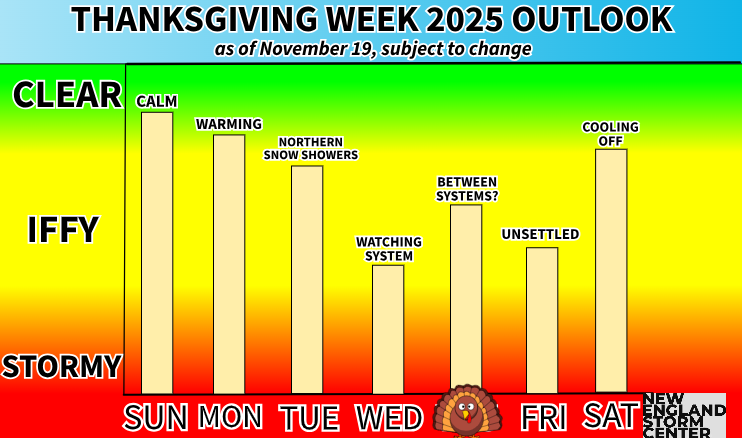Beryl's Remnants to Bring Heavy Rain to Portions of New England
- Tim Dennis
- Jul 9, 2024
- 4 min read
Former Hurricane Beryl, now a tropical depression over Arkansas, will continue to move northeast across the central United States and into the Great Lakes. By the time the storm arrives in New England, it will have merged with a northern stream trough. This will allow the soaking rain aspect of the storm to remain in place. The storm will slow down as it approaches New England thanks to a blocking high to our east.
An expansive high pressure over the Atlantic will direct the storm to our north, which will lift a warm front through New England. This front will be key in determining where the corridor of heaviest rain will fall. The heaviest rain will fall along and near this front. Areas farther north and south of this front will see more in the way of scattered showers and storms.

Most guidance continues to paint a picture where the front sets up for northern Vermont, northern New Hampshire and into central Maine. With that said, there are still solutions that show the front setting up farther south due to a slower progression through New England. This would cause the corridor of heavier rain to set up farther south, likely across southern Vermont, central New Hampshire and central Maine, but, again, the more northerly track remains the most likely outcome at this time.
As for timing, the bulk of the rain will be from Wednesday afternoon through Thursday morning. We understand this timing is very unfortunate as it falls directly on the anniversary of the historic 2023 floods (July 9-11). Scattered showers and storms may break out as early as Wednesday morning in Vermont before steadily pushing east through the afternoon and into the overnight. Steady rain will taper off Thursday morning as the front lifts north into Canada.
HRRR showing potential weather overnight from Wednesday to early Thursday morning. Remember this is just one model's depiction, there's still a spread in where the heaviest strip of rain sets up:

Scattered afternoon showers and thunderstorms will be possible Thursday afternoon, but widespread heavy rainfall should be shutting down by then. This afternoon activity would need to be watched closely after the soaking rain overnight as moisture will remain elevated, allowing for more downpours. Wednesday afternoon could see strong to severe thunderstorms south of the warm front.
The overall setup is favorable for bouts of heavy rain and torrential downpours. New England is already entrenched within very moist air as an expansive high pressure over the Atlantic is pumping very humid air into the region on a persistent southwest flow. The remnants of a tropical system will help inject more moisture into the atmosphere as it approaches. A frontal boundary has been stalled over New England since this past weekend, which will provide the forcing for rainfall.
When all is said and done, a wide swath of northern New England will likely have seen 1-2" of rain. Amounts will drop off quite steeply heading farther south as showers/storms will be much more scattered. A strip of 2-4" will be possible within the heavier rainfall, the location of which will be determined by the warm front’s position overnight. There will also likely be some thunderstorm development within this strip. Areas that see a thunderstorm could see 3-5" of rain, but these totals will likely be more localized rather than widespread.

With an extremely high moisture-content in the atmosphere (precipitable water values will be in the 2 to 2.5 inch range, which indicates the potential for very heavy rainfall rates), torrential downpours will be produced. Rainfall rates in excess of 2 inches an hour will be possible at times (it won’t rain at 2 inches an hour for a full hour). Northern Vermont has been the wettest over the last month, seeing above average precipitation in June.
The current threshold for flash flooding to occur ranges from 1.5 to 2.5 inches in three hours for much of northern New England. The six hour threshold is around 2-3 inches. Rainfall rates are poised to exceed these thresholds in some areas, especially where thunderstorms set up within the line of heavier rain.
As of Tuesday morning, a large swath of northern New England remains in the “slight” category (level 2 of 4) for excessive rainfall. This is mainly due to the continued uncertainty of where the heaviest corridor of rainfall will set up. Should confidence increase in where this sets up, a portion of northern New England may be upgraded to “moderate” (level 3 of 4), which indicates the potential for numerous flash floods.

At this point, this doesn’t appear to be a major river flooding event. By Thursday, rivers will begin to respond to the rainfall and minor flooding is possible along several rivers. The overall river flood threat will be determined by the amount of rain that falls, so a clear idea of how rivers will respond will become more clear as the rain begins to fall.
While the timing of this system is awful, coming on July 10th to the 11th, this year’s storm and last year’s storm don’t need to be compared to each other. These are two separate storms separated by a year, that’s all.







Comments